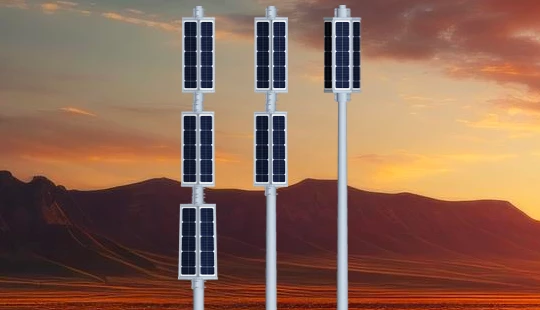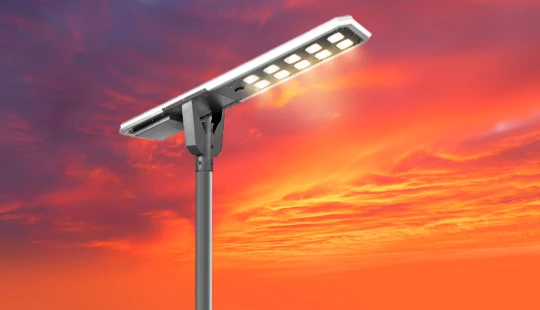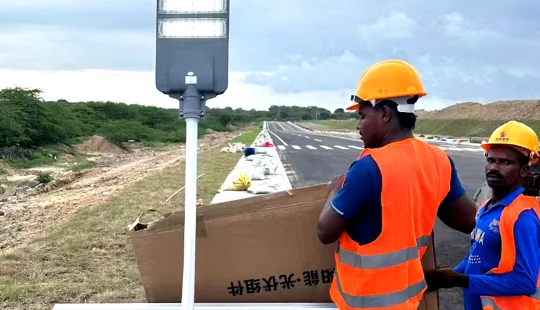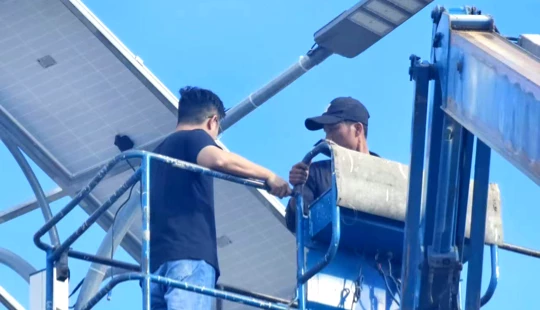Foundation Requirements for Solar Street Light Poles: A Complete Guide
-
Learn the essential foundation requirements for solar street light poles, including depth, materials, soil types, and installation tips for long-term stability.
-
Proper foundation design is essential for ensuring the stability, longevity, and safety of solar street lights. The pole needs to withstand wind, vibrations, and load stress. Therefore, a well-structured foundation tailored to the site’s condition and pole specifications is crucial.
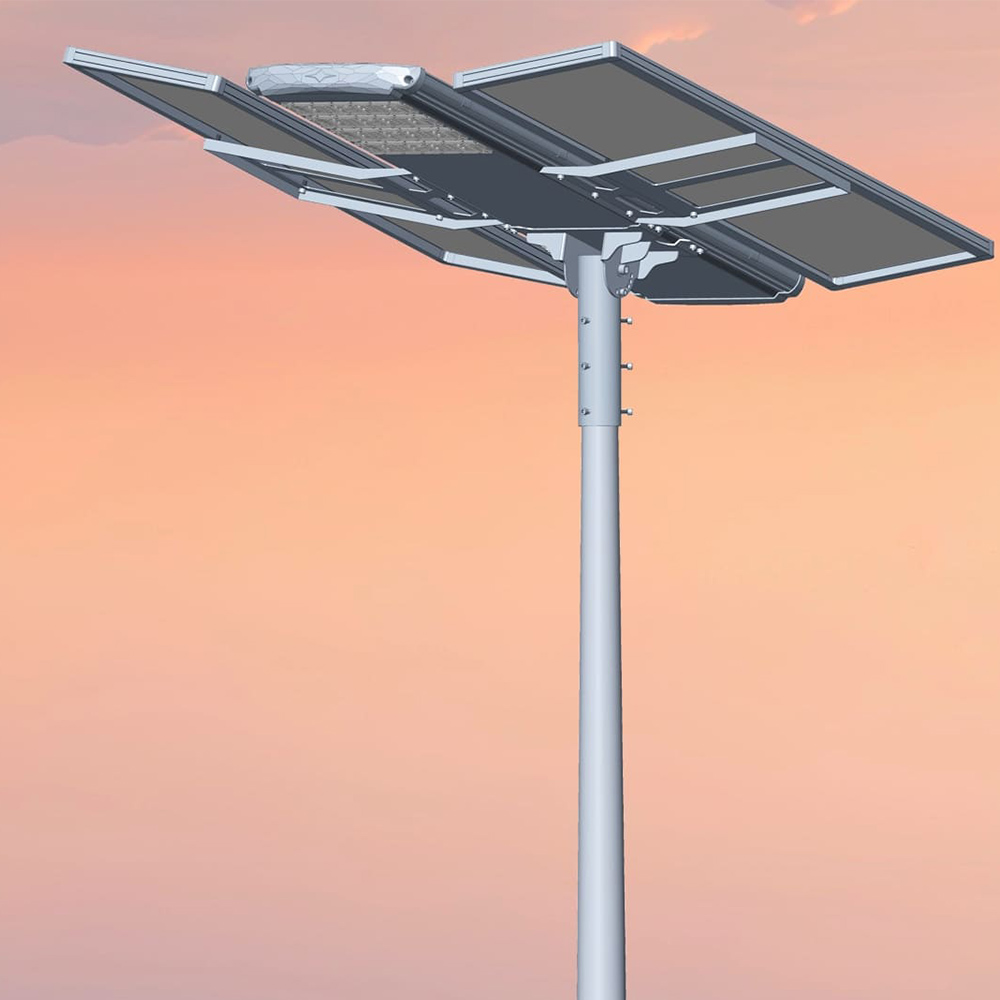
Why Is the Foundation Important?
- Provides structural stability against wind and environmental stress
- Ensures solar panels are aligned and securely mounted
- Extends product lifespan by minimizing movement and erosion
- Reduces the risk of pole tilt or failure
Factors Affecting Foundation Design
- Soil Type: Clay, sandy, gravel, or rocky terrain
- Pole Height and Weight: Taller poles require deeper foundations
- Wind Load: Areas with high wind speeds need deeper or reinforced bases
- Load Capacity: Includes solar panel, LED fixture, and battery
Common Foundation Types
1. Concrete Foundation (Most Common)
- Depth: 1.5–3 meters
- Diameter: 0.5–1 meter
- Reinforced with rebar or anchor bolts
- Requires 3–7 days of curing before pole installation
2. Flange Bolt Mount
- Suitable for hard city pavements like asphalt or concrete
- Uses anchor bolts or chemical bolts
- Less resistant to lateral wind forces
3. Ground Screw Foundation
- Eco-friendly and fast to install
- Ideal for temporary or soft-soil projects
- Typical depth: 1–2 meters
- No need for concrete
Recommended Foundation Sizes
| Pole Height | Foundation Depth | Foundation Diameter | Recommended Type |
|---|---|---|---|
| 4–5 meters | 1.2–1.5 meters | 0.4–0.6 meters | Concrete Foundation |
| 6–8 meters | 1.5–2.0 meters | 0.6–0.8 meters | Concrete Foundation |
| 9–12 meters | 2.0–2.5 meters | 0.8–1.0 meters | Concrete Foundation |
| ≤6 meters (temporary) | 1.0–1.5 meters | 0.4–0.5 meters | Ground Screw |
Installation Tips
- Align base to face true south (northern hemisphere)
- Compact the soil before pouring concrete
- Use hot-dip galvanized bolts to prevent rust
- Check local building codes and wind speed maps
Why Work With Professionals?
At GuangDong Queneng Lighting Technology Co., Ltd., we provide complete foundation and installation guidance for solar street lighting projects. Our engineering team tailors every base design based on real terrain and project requirements to ensure maximum safety and durability.
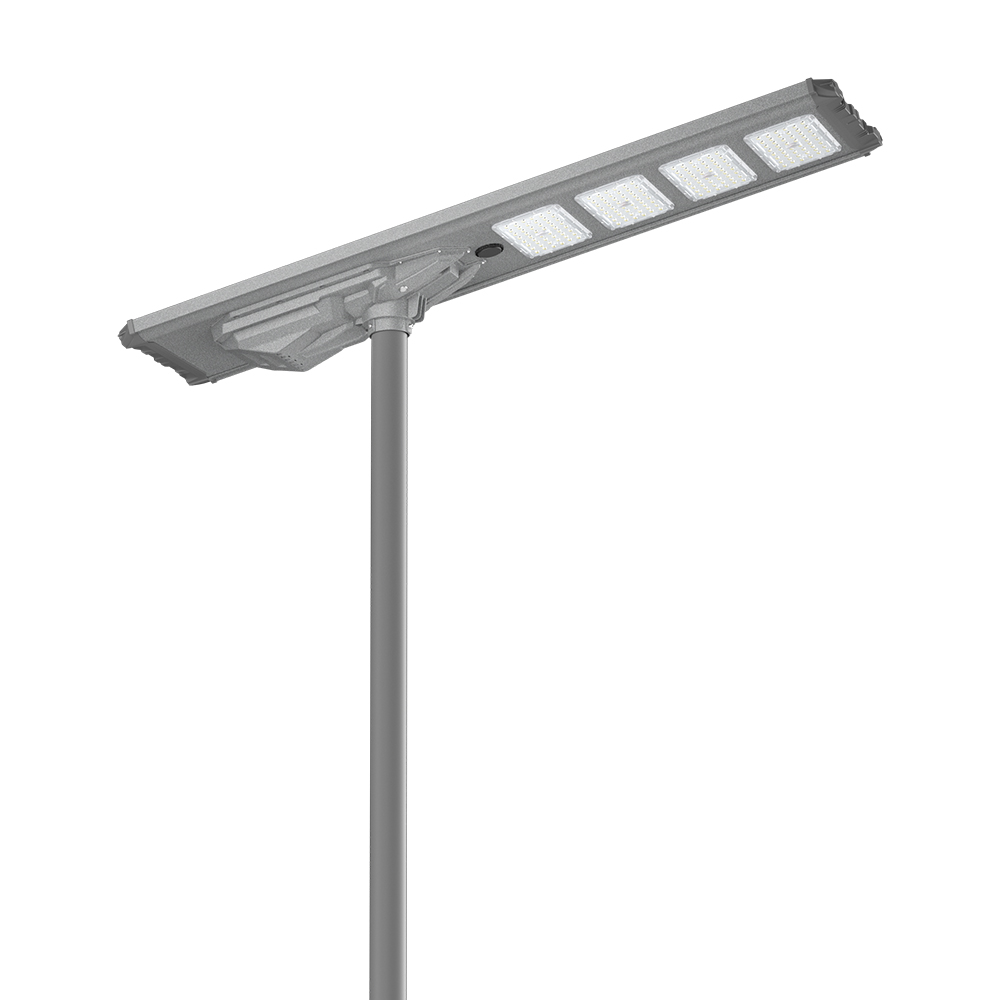
FAQs
Q1: Can ground screws be used on rocky terrain?
A: No, rocky or compacted ground is not ideal for ground screws. Concrete foundations are preferred.
Q2: How long does concrete take to cure before mounting the pole?
A: Typically, 3–7 days depending on weather and mix ratio.
Q3: Are steel reinforcements necessary for the base?
A: Yes, rebar or steel cages are strongly recommended to increase structural integrity.
Q4: Can I install on already paved surfaces?
A: Yes, flange-mounted systems with anchor bolts can be used, though they are less stable in windy areas.
Q5: Are solar street light foundations more complex than traditional ones?
A: Slightly, because they must support extra load from solar panels and batteries, requiring stronger and more precise bases.

Have more questions about our products or services?
The latest hot news you might like

Discover how solar panels power street lights, exploring the technology behind solar energy conversion, storage systems, and how solar-powered street lights are revolutionizing urban and rural lighting solutions.

Learn how AC Solar Hybrid Street Lights work, their advantages, disadvantages, system behavior in low-sunlight conditions, and why hybrid technology is ideal for regions with unstable sunlight.

Municipalities around the world are increasingly adopting solar-powered streetlights as part of their urban development strategies. Rising energy costs, the need for sustainable infrastructure, and government green initiatives are driving cities to switch from traditional street lighting to advanced LED solar streetlights.
Queneng Lighting provides municipalities with cost-effective, energy-efficient, and durable solar lighting solutions, ensuring safe and sustainable public spaces.
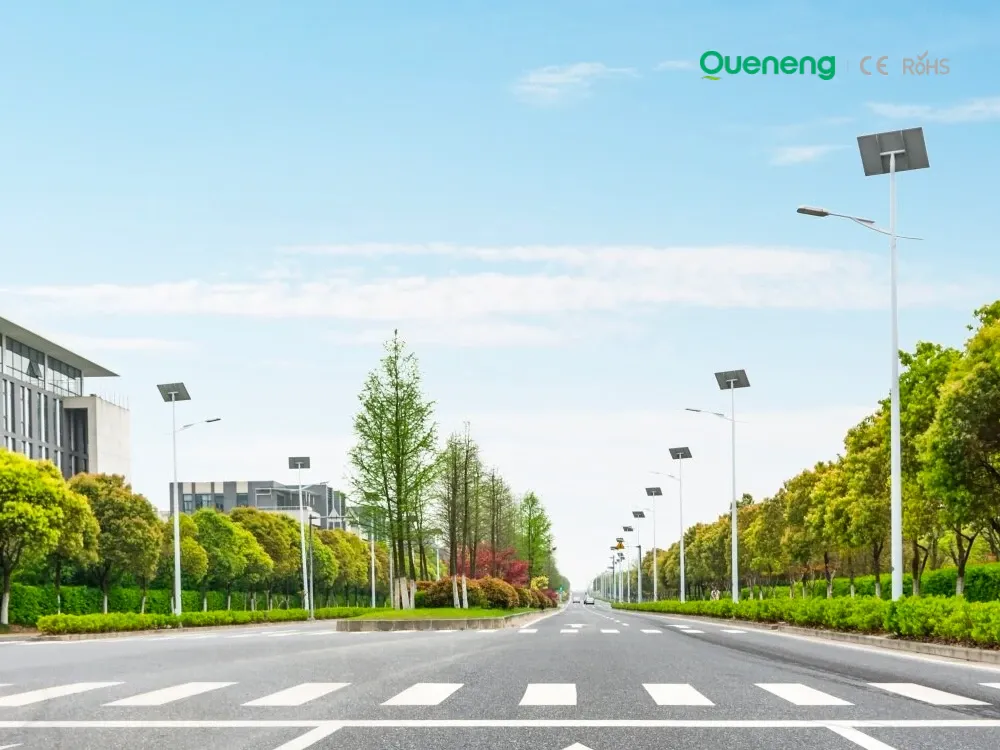
In recent years, the purchase of solar streetlights for municipalities has become a growing trend across the globe. Local governments are under pressure to reduce public expenditure, promote green energy, and create safer communities. Solar streetlights provide a reliable, cost-effective, and sustainable solution that meets these needs. Queneng Lighting, as a leading solar street lighting manufacturer, has supported multiple municipal projects worldwide with customized and energy-efficient solutions.
FAQ
Battery Performance and Testing
What are the battery reliability test items?
2) Discharge characteristics at different rates
3) Discharge characteristics at different temperatures
4) Charging characteristics
5) Self-discharge characteristics
6) Storage characteristics
7) Over-discharge characteristics
8) Internal resistance characteristics at different temperatures
9) Temperature cycle test
10) Drop test
11) Vibration test
12) Capacity test
13) Internal resistance test
14) GMS test
15) High and low temperature impact test
16) Mechanical impact test
17) High temperature and high humidity test
What are the main aspects of performance commonly referred to as secondary batteries?
Batteries and the environment
What is the main manifestation of the hazards of used batteries?
Solar Street Light Luzhou
How efficient are the solar panels in Luzhou solar street lights?
Luzhou solar street lights are equipped with high-efficiency solar panels that are designed to capture maximum sunlight, even in low-light conditions. This ensures optimal performance even on cloudy or overcast days.
Battery fundamentals and basic terms
What is the purpose of battery packaging, assembly and design?
2.Battery voltage limitation, to get a higher voltage need to connect multiple batteries in series
3. Protect the battery, prevent short-circuit to extend the life of the battery
4. Size limitation
5. Easy transportation
6. Design of special functions, such as waterproof, special appearance design.
What are the packaging materials for batteries?
2. PVC film, trademark tube
3. Connection sheet: stainless steel sheet, pure nickel sheet, nickel-plated steel sheet
4. lead sheet: stainless steel sheet (easy to solder), Pure nickel sheet (spot welding firmly)
5. plug type
6. protection components such as temperature control switches, overcurrent protector, current limiting resistors
7. cardboard boxes, cartons
8. Plastic shell type

Queneng's Luxian Reliable Solar Street Light offers energy-saving LED lighting for outdoor use. This durable, solar-powered street light provides reliable illumination, reducing energy costs and environmental impact. A perfect solution for sustainable outdoor lighting.
If you would like more information about Queneng solar lighting solutions, please send us a message by filling out the form below. Our professional team will get back to you within 24 hours!
Rest assured that your privacy is important to us, and all information provided will be handled with the utmost confidentiality.
Schedule a Meeting

Book a date and time that is convenient for you and conduct the session in advance.
Have more questions about our products or services?

